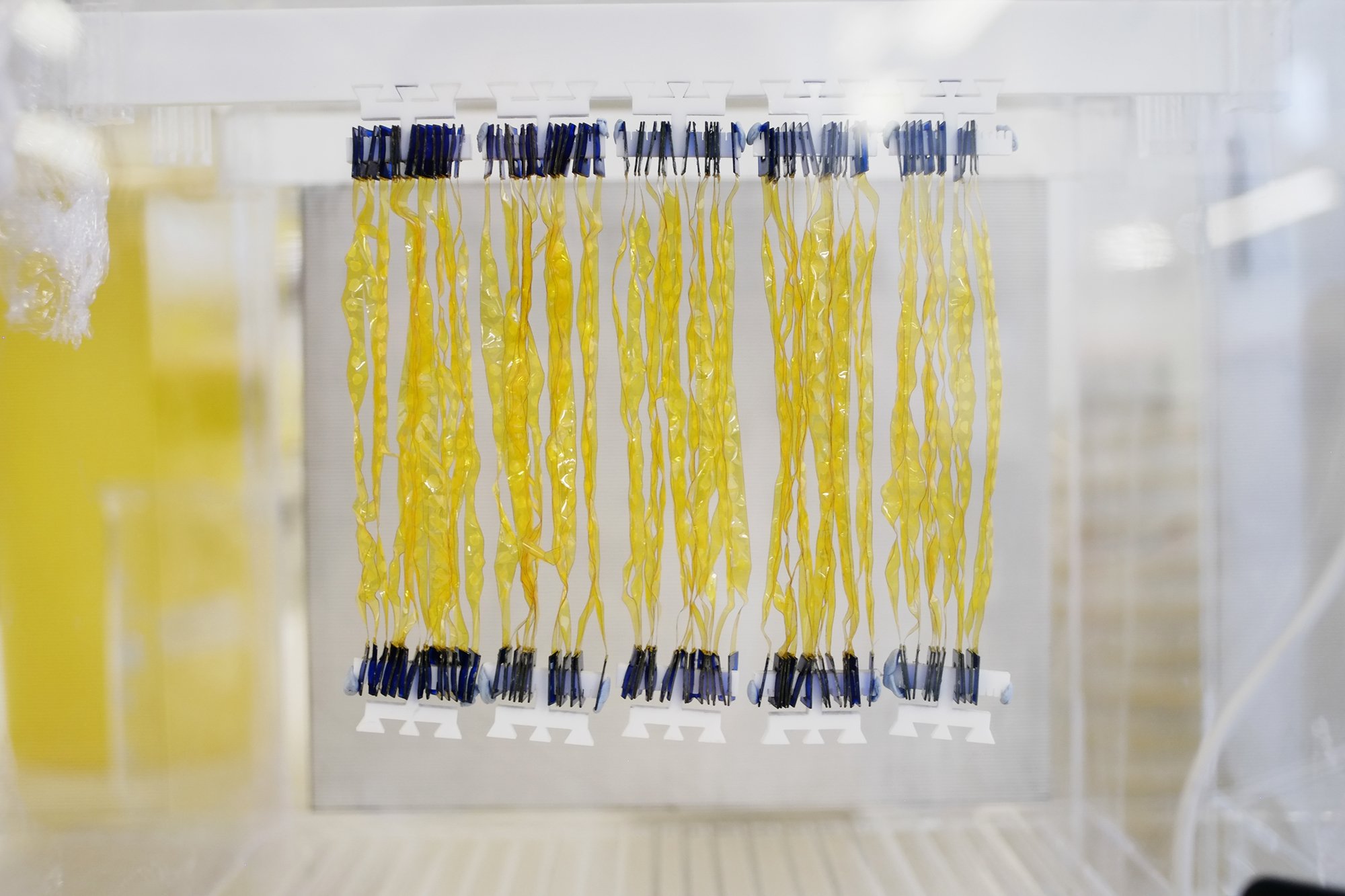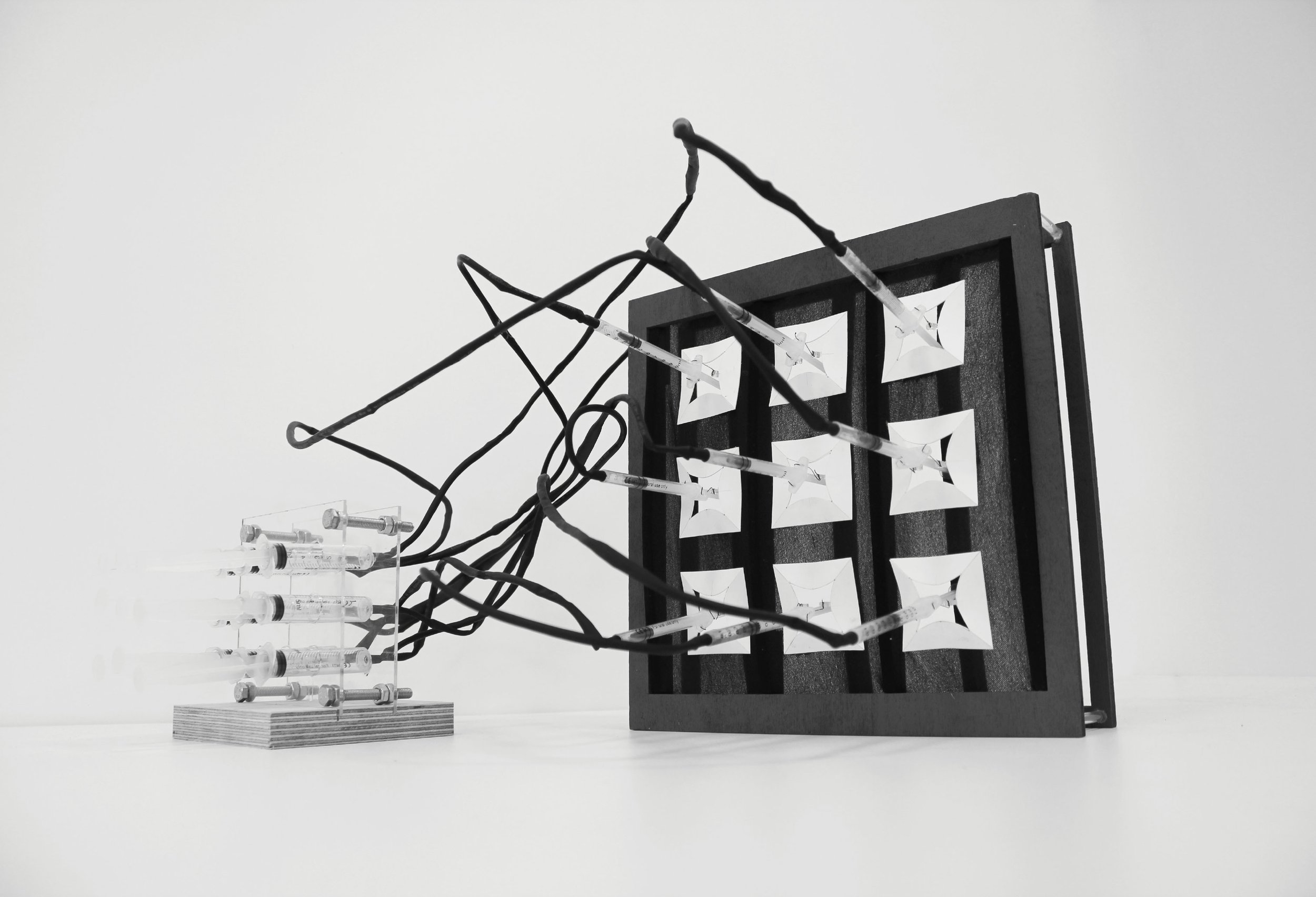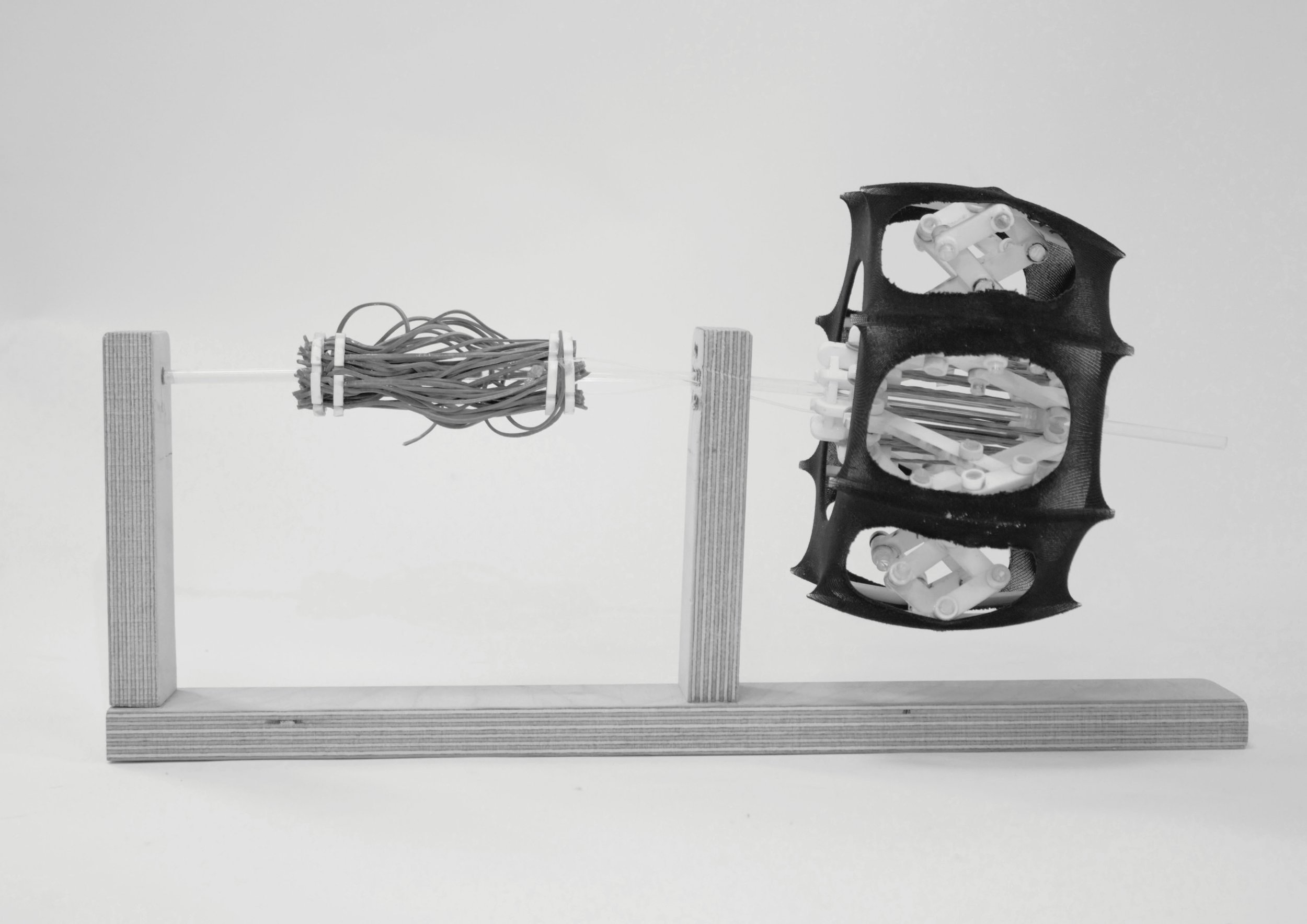
Bacterial Hygromorphs
In November 2016 we presented our work on Bacterial Hygromorphs at the 2016 ACADIA conference, hosted by the University of Michigan.
I think is fair to say the presentation caused a lot of interest, and we received a lot of feedback and comments from the audience. Here is the abstract:
The last few years has seen an increase in the interest to bring living systems into the process of design. Work with living systems, nonetheless, presents several challenges. Aspects such as access to specialists’ labs, samples of living systems and knowledge to conduct experiments in controlled settings become barriers which prevent designers from developing a direct, material engagement with the material. In this paper, we propose a design methodology which combines development of experiments in laboratory settings, and the use of what we call material proxies, which refer to materials that operate in analogue to some of the behaviors observed in the target organism. We will propose that combining material proxies with basic scientific experimentation constitute a form of direct material engagement, which encourage richer exploration of the design domain. We will develop this argument by reporting on our experience in designing and delivering the primer component of a themed design studio, structured around bacterial spores as hygroscopic components of building facades. The six-week design project asked students to consider the behavior or bacterial spores, and to imagine a number of systems in which they could be employed as actuators of a membrane system which responded to fluctuations in humidity. The module is interesting in that it negotiates some of the challenges often faced by designers who want to develop a material engagement with living systems, and to produce informed speculations about their potential in architectural design.


